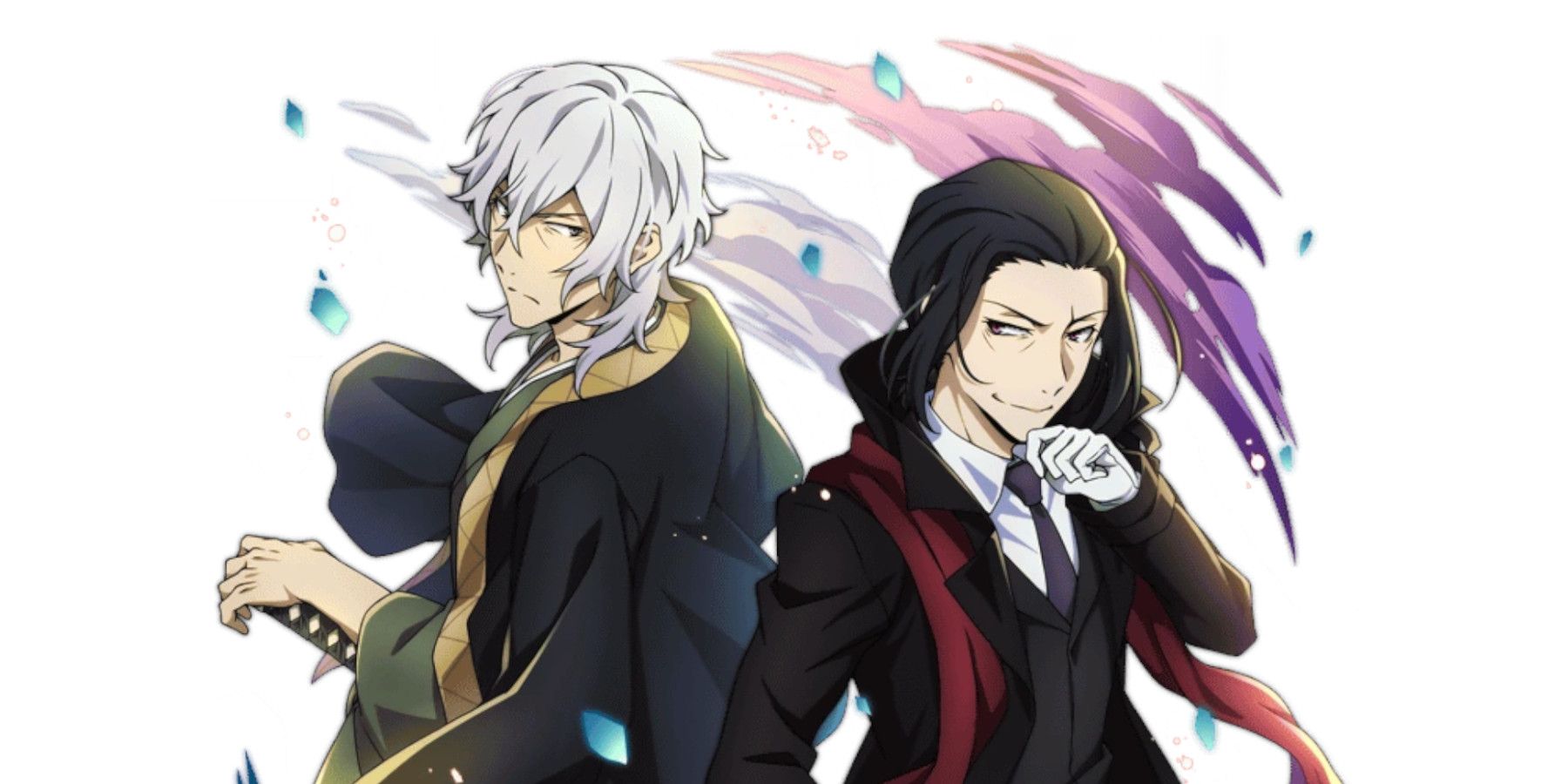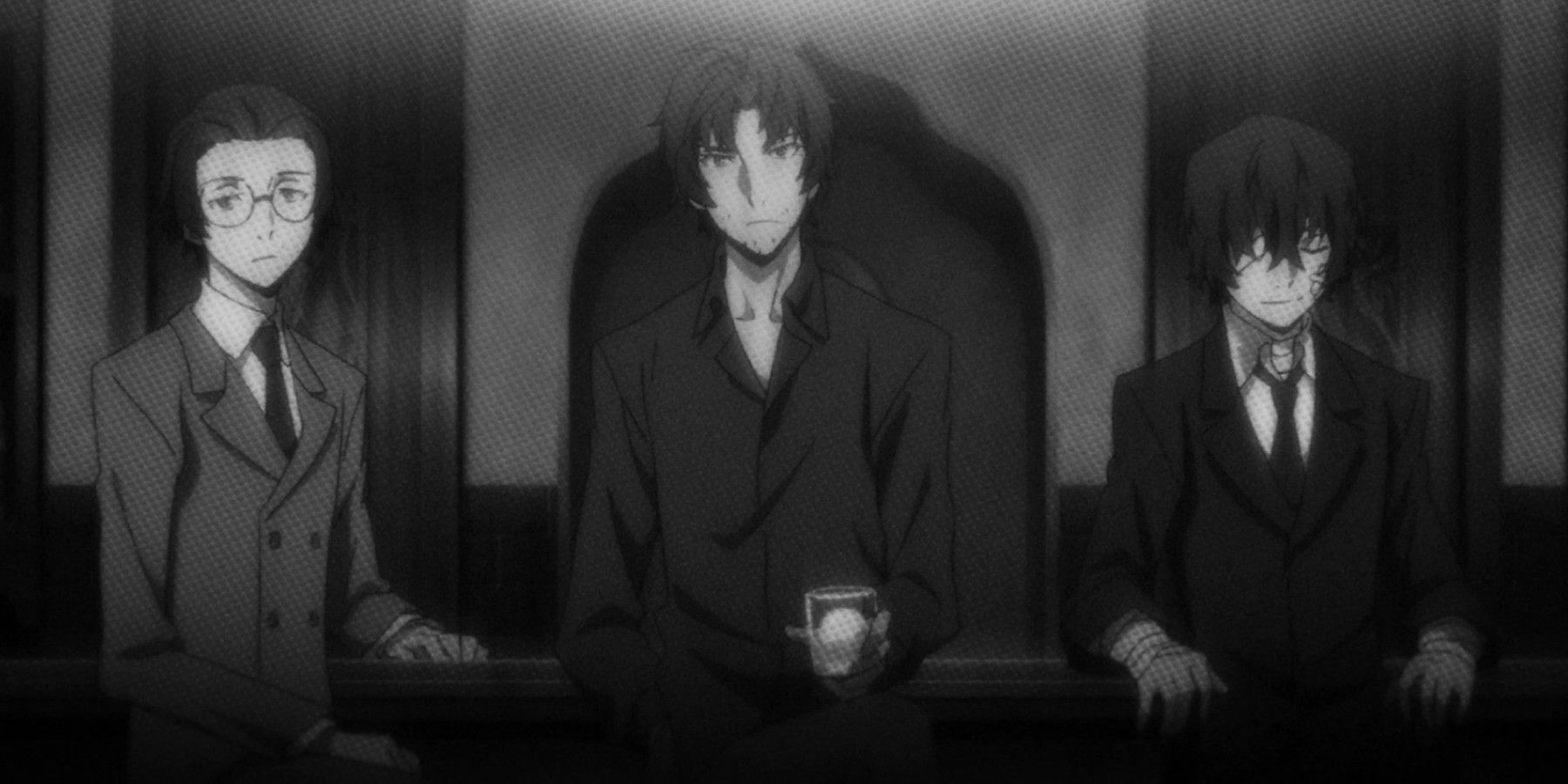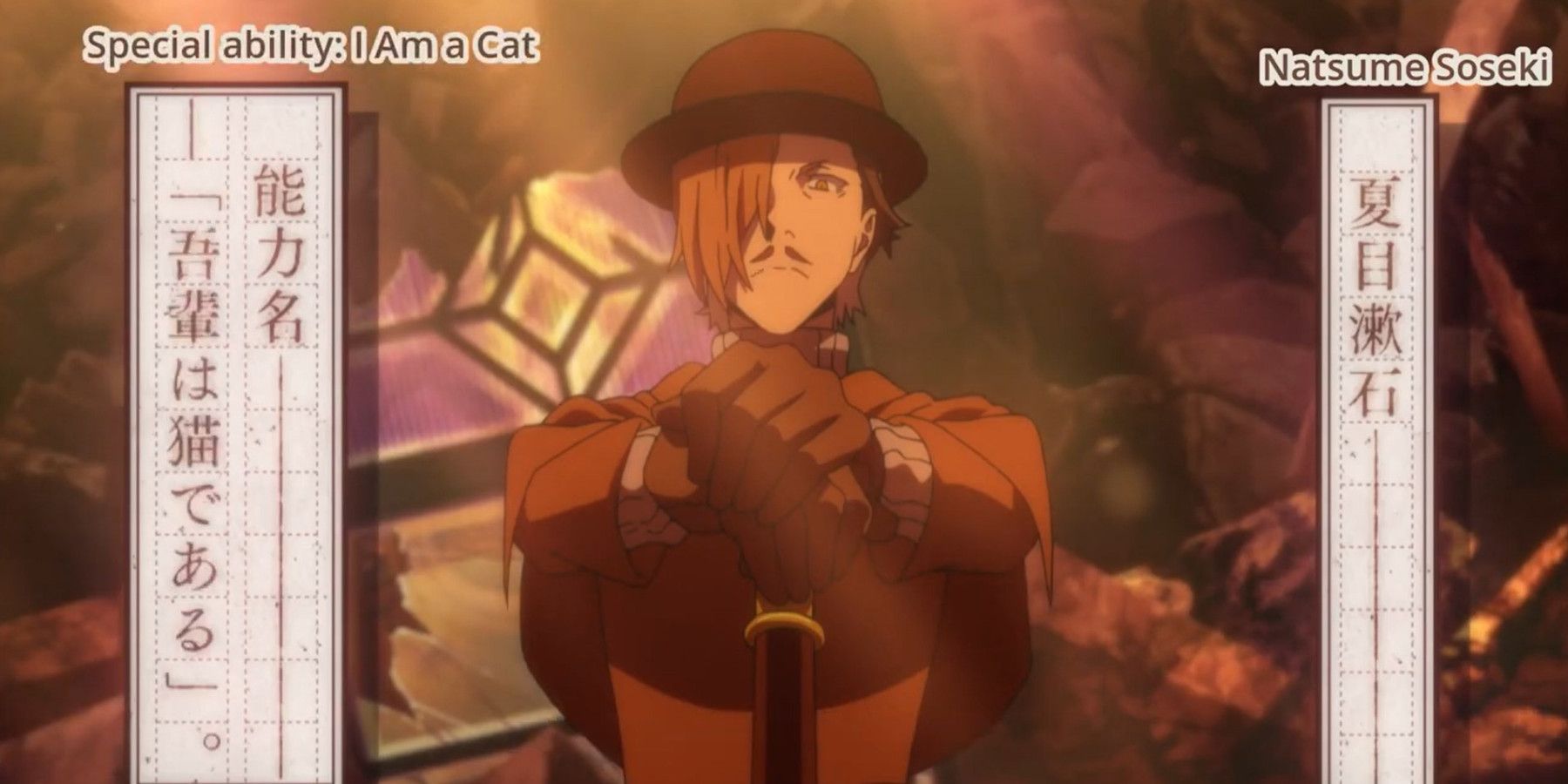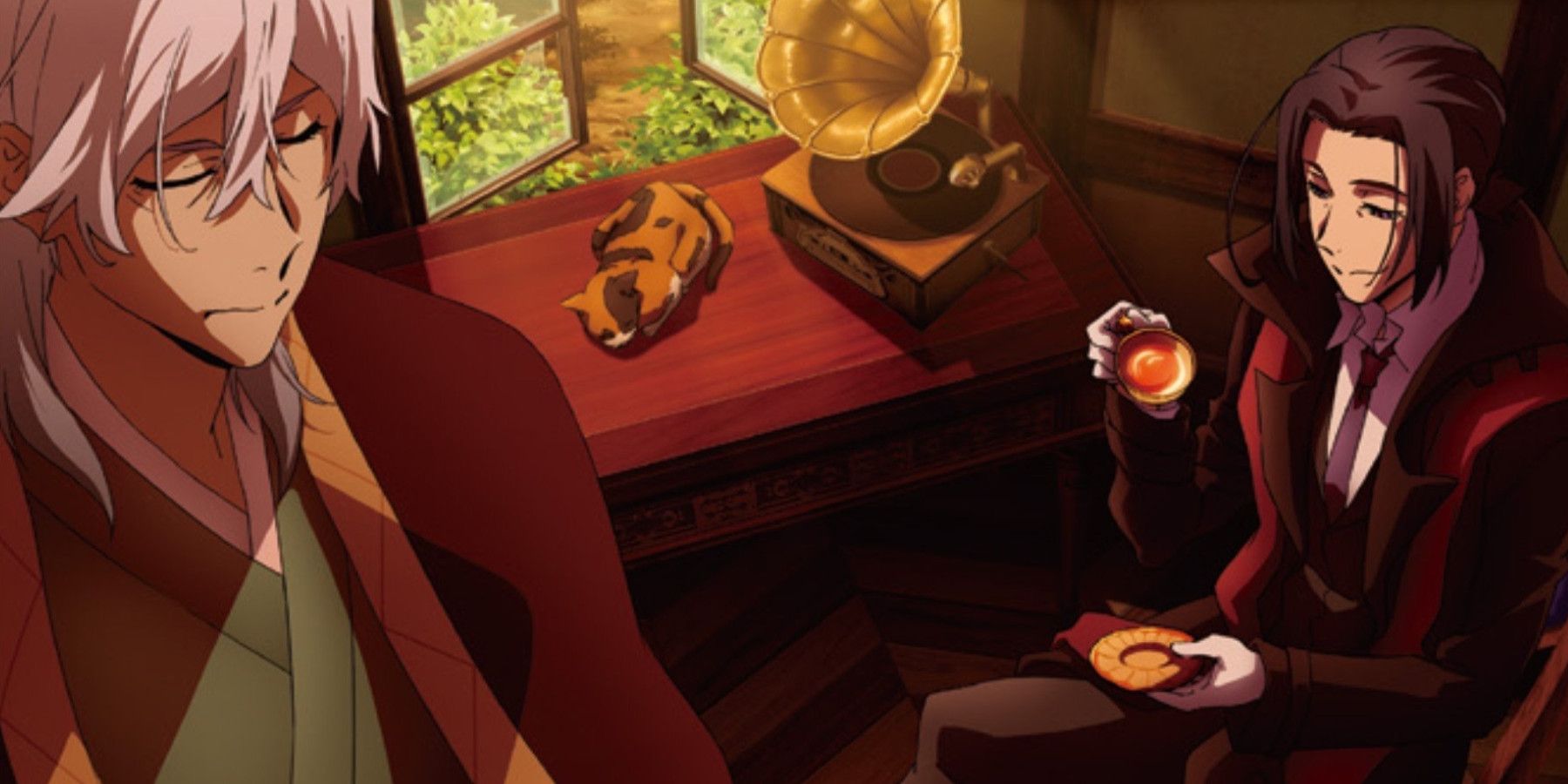The following contains spoilers for Bungo Stray Dogs, streaming on Crunchyroll.
Bungo Stray Dogs is one of the slickest and most intriguing action anime of recent years and its core conflict stems from the striking rivalry between its main factions. However, as the anime has continued and audiences have become endeared to characters on both sides, the exact nature of the rivalry has become far more complex.
In season 3, Fyodor Dostoevsky enacted "The Cannibalism" and pitted the Armed Detective Agency against the Port Mafia, breaking their cease-fire from season 2. At the darkest moment, when it looked as if the leaders were about to kill each other, an old friend appeared to put an end to the conflict and help turn the tables on Dostoevsky.
The Dark Past of Bungo Stray Dogs
The further the series goes along, the more that the past of Yokohama and the world is explored, revealing just how rich the series' own history and lore is. Throughout seasons 2 and 3, flashbacks explored the early careers of the characters, back during the "dark ages" of Yokohama, when gang wars tore the city to pieces.
In the present, when the story of Atsushi Nakajima begins, things are considerably more peaceful. The beautiful presentation of Yokohama and the vibrant colors seen throughout the show are in stark contrast to how dark, red, and violent the flashbacks are. It's part of what gives the city so much character and establishes what's at stake should another war break out.
But this peace permeating the franchise wouldn't exist without a mere victor to the past conflicts, but rather a system of checks and balances put in place to preserve what could have been a temporary peace. Enter Natsume Souseki, a powerful character in Bungo Stray Dogs, and in real life, one of Japan's most popular authors.
The Master and The Apprentice(s)
There are numerous terrible events in the series' past that necessitated an efficient solution, from the Dragon Head Conflict alluded to in season 2 to the bodies left in the wake of the previous mob boss. There is even "The Great War," another harrowing event that will be explored in the forthcoming season 4.
Regardless, Souseki saw an opportunity for a solution in two individuals: Yukichi Fukuzawa and Ogai Mori. The former was a former assassin for the government, killing politicians and bureaucrats during the war. The latter was a doctor during the war and later became a back-alley doctor patching up gangsters of all allegiances.
The two couldn't have been any more different, but in combat, they were perfect together and Souseki saw an opportunity for their opposing skillsets to serve the city's benefit. And thus, his two students became two-thirds of the foundation of a framework that defines the series as audiences come to know it in season 1.
The Three-Part Framework
Also known as the Tripartite Framework depending on the translation, this system was created by Souseki in order to preserve peace in Yokohama, which had become a lawless land in the wake of the war. Three groups would function in unison and even in opposition to each other, all to the benefit of the framework. The government, particularly the Gifted Special Operations Division, would protect the city during the day. Mori, having ascended to the leader of the Port Mafia, would rule the night. But Fukuzawa, perhaps most importantly, would watch the twilight between night and day, with the Armed Detective Agency.
What makes this revelation so compelling at the end of season 3 is that it asks the viewer to reconsider the meaning of the conflicts up to that point. It also raises questions about the philosophies about justice that the story puts forth if it has a stake in such things in the first place. Namely, because despite Mori and Fukuzawa having become enemies in the time since the Framework's conception, Souseki doesn't imply that it was broken in his appearance in season 3. If anything, the framework was still operating precisely as planned and arguably saved the city from danger.
The Port Mafia are violent and dangerous criminals and undoubtedly villains, but their motivations and their commitment to Mori make them so much more than heartless monsters. For many, like Koyo Ozaki, fighting for the Port Mafia means preventing it from becoming like it used to be; blood-stained, ruthless, and completely out of control.
It doesn't make their actions right, but it does make them perhaps the most sensible villains to have in command of the criminal element of the city. Were the solutions to Yokohama's problems black and white, only the government would have been necessary. But the government can be dispassionate in its duties, hence why Fukuzawa's agency is necessary. The very reason that the Armed Detective Agency are the heroes of the story is that they aren't cold and calculating, nor willing to be the bad guys in order to keep things peaceful. They are there in the service of the people, using their abilities to help Yokohama on a case-by-case basis, and keeping the Port Mafia in check in the process.
Bungo Stray Dogs has always been praised by critics and fans for its music, visual style, and all-together kinetic storytelling, but beneath the surface, it is so much larger than expected. Not just in terms of its lore, but how it weaves so many compelling and likable characters together. And the Three-Part Framework embodies a big part of why the story can accomplish this so well. Without such a big reveal or the emotional baggage that justifies these characters' actions and philosophies, these surface-level qualities that made the show so popular may have been nothing but a passing fascination.




